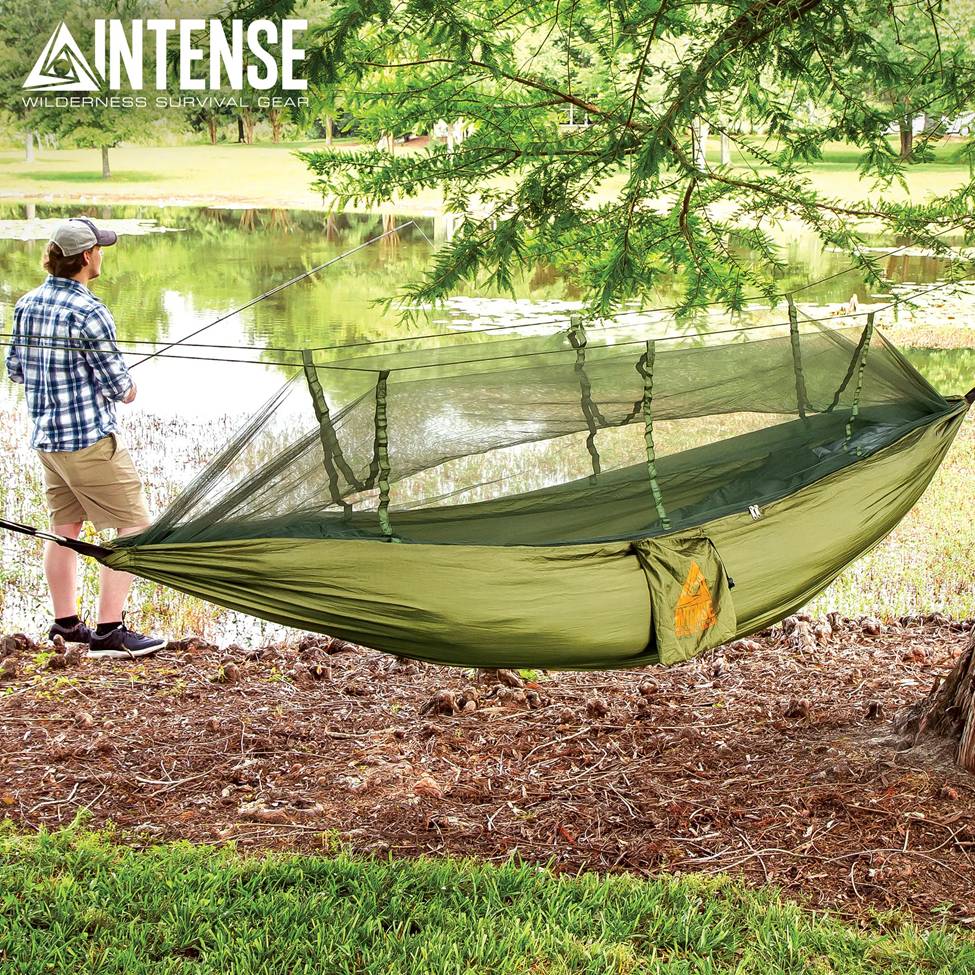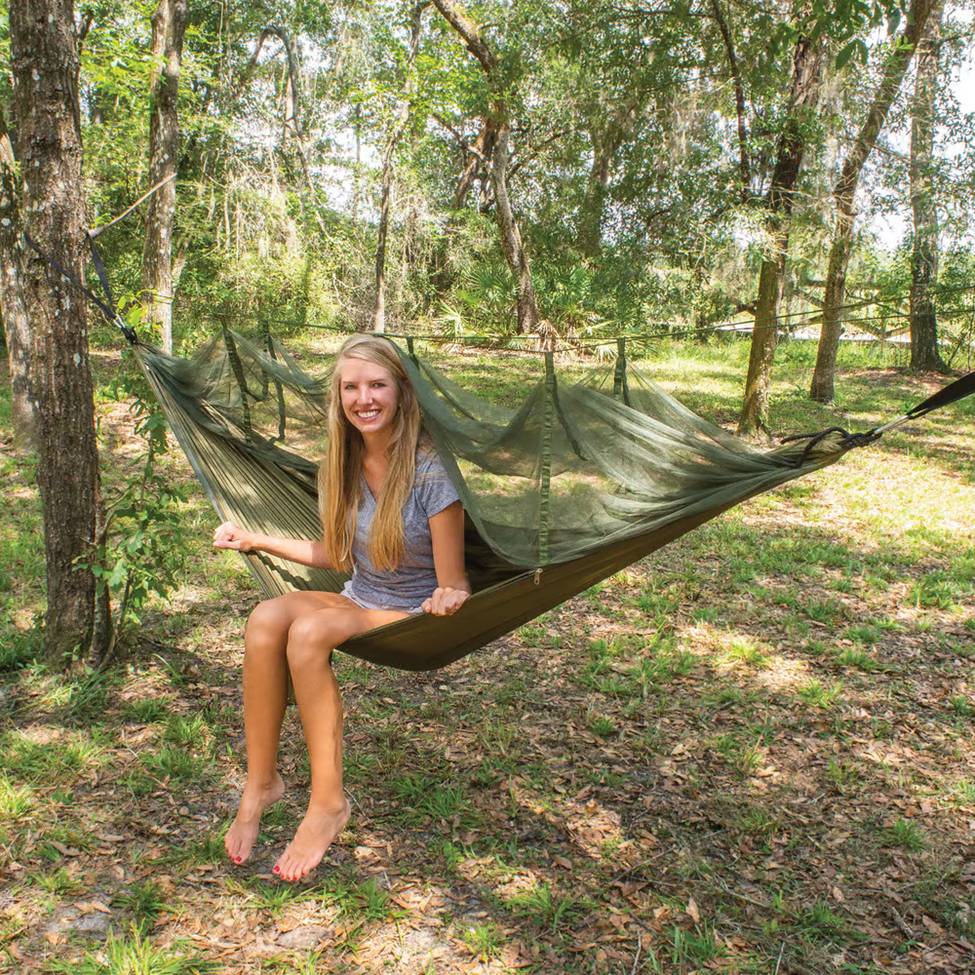Everything You Need to Know About Camping Hammocks and Sleep Systems


Conventionally, camping sleep systems consist of a sleeping pad and a sleeping bag, along with any other additional insulation you need, and perhaps a pillow. This is the basic setup whether you’re car camping, tent camping, or truly roughing it, and sleeping under the stars. But for many outdoorsmen and women, camping hammocks are continuously offering advantages over sleeping on the ground, which just can’t be ignored. So, if you’re thinking about packing a hammock rather than a sleeping bag for your next trip, here’s just about everything you need to know.
The Advantages of Camping Hammocks
First, let’s start with why you might want to choose a camping hammock over sleeping on the ground, to begin with. Here are some of the top advantages:
- Lightweight, packable, minimal
Far and away, camping hammocks are the ultralight backpacker’s best friend. With a high-quality hammock, you can forgo not only the tent but also the sleeping bag and sleeping pad. Plus, ultralight hammocks are a great option because they pack down into very small spaces and weigh almost nothing compared to popular alternatives. If you prefer to focus on the experience and not the gear, hammocks might be for you. - No tent needed; you can camp almost anywhere
Anywhere you can find two trees (or two other suitable anchor points for your hammock’s lines) you can set up camp. This makes hammock camping highly versatile and practical as an alternative to tent camping. - It keeps you off the ground
There are plenty of reasons to want to be off the ground. Being on the ground can make you wet, can expose you to a higher risk of encountering unsavory vermin, and worst of all, camping on the ground in cold weather without adequate insulation can be downright deadly. A camping hammock simply solves all of these potential problems in one fell swoop. - It’s easier to set up
Not that it takes a lot of time, effort, or skilled labor to pitch a tent and get it ready with your sleeping system, but it definitely does take a lot more time (and work) than setting up a hammock does. - A better sleep
This much is anecdotal, but some that prefer sleeping in hammocks as opposed to on the ground swear that it’s not only more comfortable but that it offers deeper, more restful sleep. The jury may yet be out on that one, but it means only one thing - you have to try it for yourself.
Is It a Suitable System Everywhere?
Despite the numerous inherent advantages of choosing a camping hammock over a sleeping bag, it’s not always the ideal system. For one, you need trees, or at least two suitable structures that can be used as anchor points for a hammock. If you live in a treeless area, such as the far north, or in a desert, then the hammock route just might not work for you. Also, if the area where you’ll be camping gets a lot of rain, tents generally afford better protection. You can prepare with a tarp or a fly for the hammock, but in general, it’s hard to argue with the protection of a tent.
How to Be Prepared for Hammock Camping
Camping comfortably with a hammock will require you to be prepared with some background skills and knowledge. Here are some special notes that can make sure you’re prepared if you’ve packed a hammock instead of a tent.
- Have line and know how to tie knots
First, make sure that your hammock comes with lines for setting it up. If it doesn’t, you’ll need some paracord (or other cordage) to make sure you can get it ready to go. Also, you will need to know a few basic knots for setting up the hammock, which are a matter not just of comfort but safety; you don’t want to freefall to the ground in the middle of the night! One of the most basic knots for setting a hammock’s lines is the shoelace knot (AKA bow knot), but other popular ones include the half-hitch, bowline, and half-line hitch, all of which are very strong and easy to learn, as well as practical for setting up a hammock. - Be prepared for bugs
As many benefits as hammocks offer, they offer categorically inferior protection against bugs and other pests than tents do - although, they do keep you off the ground. Nevertheless, in the winter, protecting against bugs might not be a big deal, but if you’re anywhere hot and wet, a mosquito net that fully encloses your camping hammock is hardly a bad idea. - Be prepared for cold


- While hammocks will keep you off the cold ground - which in and of itself is a benefit - the lightweight nature of some ultralight hammocks also means that they don’t offer all that much insulation against cold air, which can also be dangerous. The first hedge against cold conditions is to make sure you’re dressed appropriately and wear warm layers to bed; the other is that you bring some extra blankets or other insulation for your hammock to make sure you stay comfortable even through cold nights.
- Be prepared for rain Lastly, an open hammock setup is not a comfortable place to be when it’s raining, especially if it’s raining hard. Some hammocks will come with a rain fly which, assuming the conditions are not too windy, can afford some good protection. However, if yours doesn’t, you will want to make sure you pack a light rain fly, or even bring a small, light rain tarp and set that up over your hammock. It’s more gear to carry, but it’s still lighter and more pack-friendly than a tent, and it will help offer you much better protection against all forms of precipitation.
Shop Camping Hammocks Here


CH KADELS is ready to prepare you with everything you need for hammock camping, camping in general, survival, disaster preparedness, and so much more. Take a look through our full collection of camping and backpacking essentials and get in touch with us directly if you have any questions about anything we offer here.